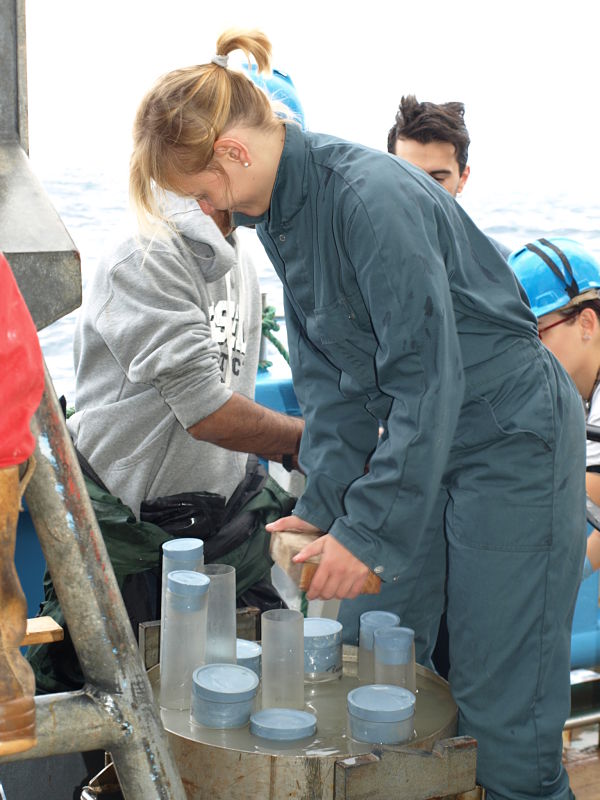Biodiversity and function of nematodes in the deep sea
 The deep sea (> 200 m water depth) is one of the most extensive habitats on Earth. It hosts a large fraction of global biodiversity and encompasses a considerable supply of minerals, and natural food and energy sources. Anthropogenic activities, such as pollution, exploitation of fish and oil, as well as global change may change deep-sea properties and processes. It is therefore of paramount importance that we gain more insight into the functioning of the deep-sea ecosystem to support sustainable ecosystem management.
The deep sea (> 200 m water depth) is one of the most extensive habitats on Earth. It hosts a large fraction of global biodiversity and encompasses a considerable supply of minerals, and natural food and energy sources. Anthropogenic activities, such as pollution, exploitation of fish and oil, as well as global change may change deep-sea properties and processes. It is therefore of paramount importance that we gain more insight into the functioning of the deep-sea ecosystem to support sustainable ecosystem management.
The international and multidisciplinary research projects HERMES (“Hotspot Ecosystem Research on the Margins of European Seas”; http://www.eu-hermes.net/), HERMIONE (“Hotspot Ecosystem Research and Man’s Impact ON European Seas”; http://www.eu-hermione.net/) en BIOFUN (“BIOdiversity and ecocystem FUNctioning in southern European deep-sea environments: from viruses to megafauna”) were erected to gain more knowledge on the structure, functioning and dynamics of deep-sea ecosystems. These projects were the framework for the PhD study of Ellen Pape of the Marine Biology Research Group of Ghent University. For her research, Ellen concentrated on nematodes or round worms, which form the dominant phylum within the meiofauna; bottom-dwelling animals between 0.032 and 1 mm large. These organisms are the most abundant, diverse and ubiquitous metazoans that live within the deep-sea bed. Nevertheless, it is not known which role nematodes fulfil within the ecosystem, what the importance is of their high biodiversity, and which factors drive this high diversity.
Specifically, Ellen investigated which environmental factors influence nematode diversity and what the effect is of the composition and diversity of nematode assemblages on carbon assimilation and remineralisation. Her results showed that the amount of available energy (food), the degree of chemical (e.g. high concentrations of toxic substances like sulphide) and physical (e.g. hydrodynamic activity) stress, and habitat heterogeneity play an important structuring role in deep-sea nematode communities. The environmental context not only impacts the structure but also the function of nematode assemblages. Finally, Ellen’s research indicated that a climate-regulated surface water process such as primary productivity influences the structure, diversity and functioning of nematodes. This finding suggests that global change is affecting, and will continue to affect, nematodes communities in the deep sea.
